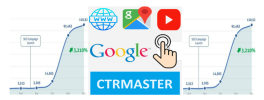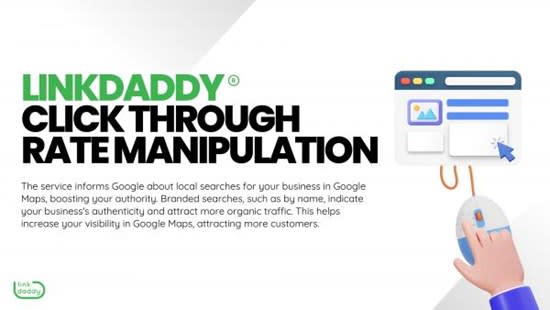The Role of a CTR Manipulation Press Release in Building Brand Name Authority
Transform Your Ad Campaigns With Targeted CTR Manipulation
Effective ad projects pivot on the intricacies of click-through price (CTR), a crucial metric that shows audience engagement. Targeted CTR manipulation, notified by data analytics, supplies an avenue to improve just how advertisements attach with prospective customers.
Understanding Click-Through Price
What makes a click-through rate (CTR) an important metric in digital advertising? CTR is the portion of users who click a particular web link out of the overall variety of customers that watch a web page or a promotion. It works as an essential indication of the effectiveness of internet marketing campaigns, reflecting just how well the material reverberates with the target market. A high CTR recommends that the advertisement is appealing and appropriate, while a reduced CTR suggests a requirement for optimization.
Recognizing CTR enables marketers to review the efficiency of various campaigns, ad layouts, and targeting methods. It permits benchmarking versus market criteria, giving understandings right into areas that may call for enhancement. Additionally, CTR plays a crucial role in search engine optimization (SEARCH ENGINE OPTIMIZATION) and pay-per-click (PAY PER CLICK) advertising, influencing quality ratings and general visibility in search results page.
Significance of Targeted CTR

Moreover, targeted CTR manipulation allows marketing professionals to refine their techniques based on audience actions and preferences. By evaluating data, services can identify which segments respond favorably to specific web content types and readjust their campaigns appropriately. This accuracy causes much more impactful messaging and higher conversion rates.
Additionally, targeted CTR fosters brand loyalty. When clients receive appropriate and attractive content, they are a lot more most likely to involve with the brand name, constructing trust fund and encouraging repeat communications. Organizations can grow lasting connections with customers while enhancing their overall market presence. In recap, the importance of targeted CTR depends on its capability to not only enhance project performance but additionally to develop significant connections with audiences, leading the way for continual development and success.
Strategies for CTR Control
Exactly how can marketing professionals successfully adjust click-through prices (CTR) to achieve desired outcomes? Several techniques can be employed to enhance CTR, therefore making best use of the performance of marketing campaigns.

2nd, the usage of attractive visuals can significantly impact CTR. High-grade photos or video clips that align with the ad's message can draw focus and punctual customers to click. Additionally, leveraging ad placement strategically on platforms where the target market is most energetic can improve presence and interaction rates (CTR Manipulation).
Third, customizing ads based upon individual behavior and preferences can yield better results. Utilizing retargeting strategies, marketers can remind prospective consumers of products or solutions they previously watched, therefore enhancing the chance of clicks.
Finally, optimizing for mobile is critical, as a considerable section of internet traffic comes from smart phones. Making certain advertisements are mobile-friendly can lead to improved CTR and total campaign performance.
Analyzing Target Market Habits
Recognizing audience habits is essential for marketing experts intending to improve click-through rates (CTR) and general project performance. By diving right into the motivations, choices, and on-line practices of target audiences, marketing experts can tailor their campaigns to resonate more deeply with potential consumers.
Assessing audience behavior involves numerous vital elements, consisting of demographic evaluation, psychographic profiling, and customer trip mapping. Group evaluation supplies understandings right into age, income, sex, and area, which can educate the style and messaging of promotions. Psychographic profiling, see this page on the various other hand, uncovers way of livings, worths, and interests, allowing marketers to develop web content that lines up with target market desires.
User trip mapping is necessary for recognizing exactly how prospective clients communicate with numerous touchpoints, from initial understanding to last conversion. By recognizing the stages where target markets disengage or involve, marketing professionals can optimize their strategies to enhance CTR.

Gauging Campaign Success
Measuring project success is a critical component of any advertising approach, as it supplies the essential understandings to examine efficiency and drive future choices. To efficiently gauge success, marketing professionals have to develop clear, measurable goals lined up with overarching business goals. Secret performance indicators (KPIs), such as click-through rates (CTR), conversion prices, and return on financial investment (ROI), act as essential metrics in this procedure.
Tracking CTR especially allows marketing experts to evaluate the performance of targeted advertisement projects. A high CTR shows that the ad reverberates with the target market, while a low CTR might necessitate a reevaluation of targeting specifications, imaginative components, or messaging methods. In addition, assessing conversion rates uses much deeper insights into how well a project drives preferred activities, such as pop over to this web-site sign-ups or acquisitions.
Leveraging analytics tools can additionally enhance dimension initiatives, enabling real-time information tracking and adjustments. Regularly evaluating campaign efficiency versus developed standards ensures constant enhancement and optimization. Inevitably, a durable dimension strategy not only highlights successes but likewise uncovers areas for enhancement, leading the way for a lot more effective and impactful marketing initiatives in the future.
Verdict
Finally, transforming advertisement projects through targeted click-through rate (CTR) adjustment requires an extensive understanding of target market actions and effective messaging techniques. By using data-driven approaches, including A/B testing and customized visuals, campaigns can attain greater involvement and conversion prices. Assessing group and psychographic insights better enhances the capability to get in touch with the audience. Inevitably, these approaches add to enhanced brand name commitment and made the most of return on investment, emphasizing the importance of targeted CTR control in digital advertising and marketing.
Effective ad projects pivot on the complexities of click-through rate (CTR), an important metric that reflects target market involvement. A high CTR suggests that the ad is appealing and appropriate, while a reduced CTR shows a demand for optimization.
In summary, the importance of targeted CTR exists in its capability to not only improve campaign efficiency however likewise to produce purposeful connections with target markets, paving the method for continual development and success.
A high CTR suggests that the ad resonates with the audience, while a reduced CTR might require a reevaluation of targeting specifications, imaginative aspects, or messaging techniques.In final thought, changing ad projects through targeted click-through price (CTR) adjustment requires a thorough understanding of audience actions and effective messaging methods.